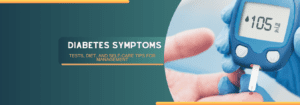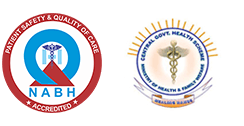Pain on Left Side of Head: Causes, Symptoms, and Treatment
Exploring Headache on Left Side of Head: Causes, Symptoms, and Treatment
Understanding Left Side Headache
At some point in our lives, many of us have experienced the discomfort of a headache on the left side of the head. This condition, often characterized by a sharp or dull pain localized to the left side, can significantly disrupt our daily activities and quality of life. Understanding the causes, symptoms, and treatment options for left side headaches is crucial for effective management and relief.
Causes of Headache on Left Side
Migraine:
One of the most common causes of left-sided headaches is migraine. Migraine headaches often present as throbbing pain on one side of the head and can be accompanied by other symptoms such as nausea, vomiting, and sensitivity to light and sound.
Tension Headache:
Tension headaches can also manifest as pain on the left side of the head. These headaches are often described as a constant pressure or tightness and may be triggered by stress, poor posture, or muscle tension.
Cluster Headache:
Cluster headaches are intense headaches that occur in clusters or cycles. While the pain is typically felt around one eye, it can radiate to the left side of the head and may be accompanied by eye redness, tearing, and nasal congestion.
Sinusitis:
Sinus headaches can cause pain and pressure in the forehead, cheeks, and around the eyes, which may extend to the left side of the head. Sinus headaches are often associated with sinus congestion and inflammation.
Other Causes:
Other potential causes of left-sided headaches include temporal arteritis, occipital neuralgia, trigeminal neuralgia, and secondary headaches due to underlying conditions such as brain tumors or vascular malformations.
Symptoms of Left Side Headache
The symptoms of a headache on the left side of the head can vary depending on the underlying cause but may include:
- Throbbing or pulsating pain
- Dull, aching pain
- Sharp, stabbing pain
- Nausea and vomiting
- Sensitivity to light and sound
- Blurred vision
- Fatigue
- Difficulty concentrating
Treatment Options
Over-the-Counter Medications:
For mild to moderate left side headaches, over-the-counter pain relievers such as ibuprofen, acetaminophen, or aspirin may provide relief.
Prescription Medications:
In cases of severe or recurrent headaches, prescription medications such as triptans, ergotamines, or preventive medications may be prescribed by a healthcare professional.
Lifestyle Modifications:
Practicing relaxation techniques, maintaining a regular sleep schedule, staying hydrated, and avoiding triggers such as stress, certain foods, or environmental factors can help prevent left side headaches.
Medical Interventions:
For chronic or debilitating headaches, medical interventions such as nerve blocks, Botox injections, or surgical procedures may be considered under the guidance of a specialist.
A headache on the left side of the head can be a debilitating condition that impacts various aspects of daily life. By understanding the causes, symptoms, and treatment options available, individuals can effectively manage their symptoms and improve their overall quality of life.
FAQ’s
Why is the Back of My Head Hurting?
The sensation of pain in the back of my head can stem from various factors, including muscle tension, nerve compression, or underlying medical conditions such as cervical spine issues or occipital neuralgia.
Understanding Pain in the Back of My Head
Pain in the back of my head can manifest as a dull ache, throbbing sensation, or sharp, stabbing pain. Common triggers include poor posture, stress, fatigue, and prolonged sitting or standing.
Deconstructing Left-Sided Headaches
Left-sided headaches encompass a spectrum of conditions, including migraines, tension headaches, cluster headaches, and sinus headaches. Identifying the specific type of headache is crucial for targeted treatment.
Deciphering Symptoms and Triggers
Why Do I Have Pain on My Left Side?
The occurrence of pain on my left side can be attributed to various factors, including vascular issues, nerve impingement, muscular strain, or referred pain from adjacent structures such as the neck or shoulder.
Pinpointing the Triggers of Left-Sided Head Pain
Understanding the triggers of left-sided head pain is essential for effective management. Common triggers include stress, hormonal fluctuations, certain foods or beverages, environmental factors, and changes in weather or altitude.
Exploring Headache Patterns and Characteristics
Headache when lying on left side or headache in front left side of head may indicate specific headache types or underlying conditions. Documenting headache patterns, duration, intensity, and associated symptoms can aid in diagnosis and treatment planning.
Evaluation and Diagnosis
Seeking Answers for Chronic Left-Sided Headaches
Chronic left-sided headaches warrant a thorough evaluation by a healthcare professional. Diagnostic tests such as imaging studies, blood tests, and neurological assessments may be recommended to rule out underlying medical conditions.
Differential Diagnosis: Unraveling the Complexity of Left-Sided Head Pain
Distinguishing between primary headaches (e.g., migraines, tension headaches) and secondary headaches (e.g., due to underlying medical conditions) is crucial for appropriate management and treatment.
Treatment Strategies and Management
Tailoring Treatment Approaches to Individual Needs
Treatment for left-sided headaches should be tailored to the specific type of headache, severity of symptoms, and individual patient preferences. A multidisciplinary approach may include lifestyle modifications, medication management, complementary therapies, and interventional procedures.
Harnessing the Power of Lifestyle Modifications
Lifestyle modifications play a pivotal role in managing left-sided headaches. Strategies such as stress reduction techniques, regular exercise, adequate hydration, consistent sleep patterns, and dietary modifications can help minimize headache frequency and severity.
Exploring Medication Options
Medication management for left-sided headaches may include over-the-counter pain relievers, prescription medications (e.g., triptans, NSAIDs, preventive medications), and alternative therapies (e.g., acupuncture, biofeedback).
FAQs: Answering Your Burning Questions
Q: Why do I only get headaches on the left side of my head?
Left-sided headaches can be attributed to various factors, including migraine, tension headache, cluster headache, sinus headache, or underlying medical conditions. Identifying triggers and seeking medical evaluation is essential for appropriate management.
Q: What causes headaches on the left side?
Headaches on the left side can be caused by migraines, tension headaches, cluster headaches, sinus headaches, cervical spine issues, occipital neuralgia, or referred pain from adjacent structures. Evaluation by a healthcare professional is necessary for accurate diagnosis and treatment.
Q: How can I alleviate pain in the back of my head?
Pain in the back of the head can be relieved through various strategies, including stress reduction techniques, heat or cold therapy, gentle stretching exercises, massage, over-the-counter pain relievers, and prescription medications prescribed by a healthcare professional.
Q: What lifestyle modifications can help manage left-sided headaches?
Lifestyle modifications such as stress reduction techniques, regular exercise, adequate hydration, consistent sleep patterns, and dietary modifications (e.g., avoiding trigger foods) can help minimize left-sided headache frequency and severity.
Q: When should I seek medical attention for left-sided headaches?
It is advisable to seek medical attention if left-sided headaches are severe, recurrent, or accompanied by concerning symptoms such as vision changes, weakness, numbness, difficulty speaking, or altered mental status.
Q: Are there any natural remedies for left-sided headaches?
Natural remedies for left-sided headaches may include herbal supplements (e.g., feverfew, butterbur), aromatherapy, acupuncture, yoga, meditation, and dietary supplements (e.g., magnesium, riboflavin). However, it is essential to consult with a healthcare professional before trying any new treatment.






